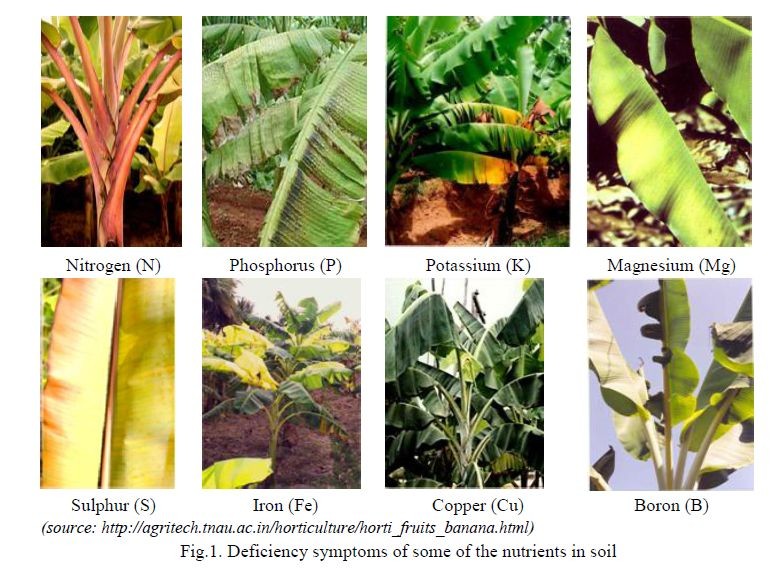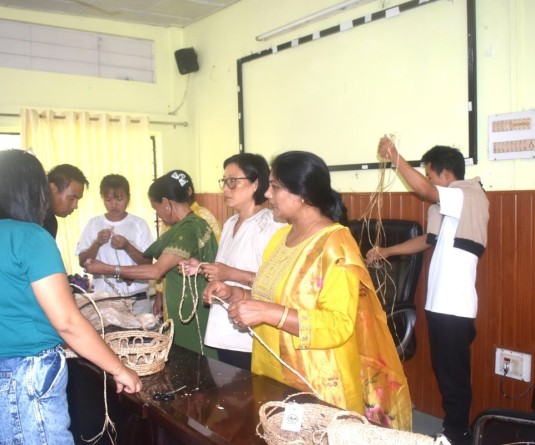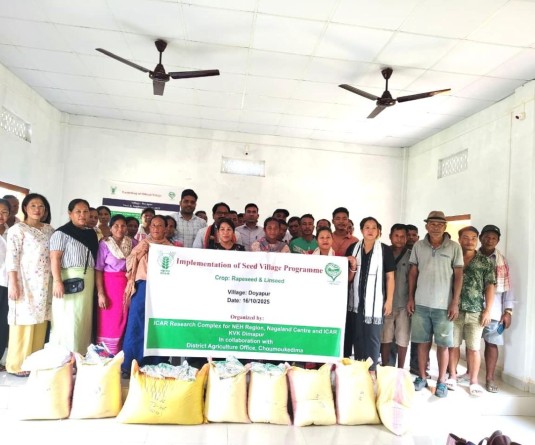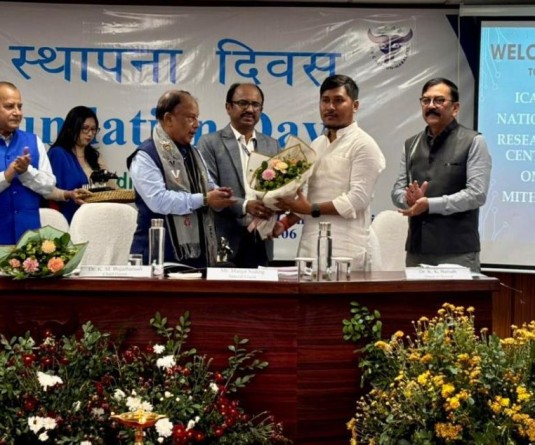
Banana is a high value crop grown in tropical and subtropical zones of India, with a temperature range of 15ºC-35ºC and 75-85% relative humidity. It can be cultivated from low altitudes to as high as 2000m amsl (meter above mean sea level). But, at higher altitudes banana cultivation is restricted to a few varieties like Hill banana. In cultivation of banana four months of monsoon (June to September) with an average rainfall of 650-750mm are crucial period for vigorous vegetative growth. The plant prefers soils having good drainage, adequate fertility and moisture content. Deep, rich loamy soil with pH 6.5–7.5 is most preferred. A soil rich in organic material with high nitrogen content, adequate phosphorus level and plenty of potash is ideal for the plant.
Nutritional Deficiency symptoms
Due to its large size and rapid growth, banana requires relatively large amount of nutrients for higher yield and productivity. If the required nutrients are not provided in the crucial growth stages the crop starts showing the nutritional deficiency symptoms. The deficiencies of the following nutrients easily show symptoms in the plant (Fig.1).
Nitrogen (N): In case of nitrogen deficiency leaves of all ages become pale green. Mid ribs, petioles and leaf sheaths turn reddish pink and rosette in appearance. Plantations with poor root growth exhibit such symptoms. Bunch weight and fruit quality is affected.
Phosphorus (P): Deficiency of this nutrient show stunted growth in the plant with poor root development. Old leaves show marginal chlorosis, curling of leaves, breaking of petioles and bluish green colour of younger leaves.
Potassium (K): The deficiency symptoms include orange yellow colour of old leaves, scorching along the margins, reduction in total leaf area, curving of midribs etc. This deficiency will also cause late bunch initiation, small number of fruit per bunch and reduced size of fruits.
Magnesium (Mg): Yellow discolouration is observed in the midblade and midrib portion however the margins of the leaf remain green. Purple mottling of the petioles, marginal necrosis and separation of leaf sheaths from the pseudostem is also seen.
Sulphur (S): The deficiency symptoms include yellow or white appearance of young leaves, necrotic patches on the leaf margins, thickening of veins, stunted growth and small or choked bunches.
Iron (Fe): The younger leaves turn yellow or white.
Copper (Cu): Both young and old leaves show symptoms of chlorosis and curve towards the base, which gives an umbrella like appearance to the plant.
Boron (B): Deficiency symptoms include reduced leaf area, curling of leaves, lamina deformation, appearance of white stripes perpendicular to the veins on the lamina of young leaves, thickening of secondary veins and inhibition of root and flower formation.
Toxicity symptoms in acid soils
Banana show typical aluminium (Al) toxicity symptoms if the soil pH falls below 5.5. In such condition stem elongation and fruit bunches become very weak. Root growth is severely reduced. Under severe toxicity conditions plant will show lodging during monsoon.
The toxicity of iron (Fe) causes necrotic patches or marginal blackening followed by necrosis of the leaves. This can be visualized after 6-7months of planting. The symptoms are somewhat similar to panama wilt at advanced growth stages. In iron toxicity conditions trenches are dug to reduced the effect on the plant.
Another toxicity symptom in acid soils is that of manganese (Mn) toxicity. In this case the plant leaf margins show sun burnt appearance and older leaves become chlorotic. Plant root growth also gets restricted.
Nutrient management practices
Considering the soil quality and environmental security, it is always necessary to go for an integrated nutrient management (INM) practices, involving various sources of organic manures for the cultivation of banana. For banana plant the nutrient management practices starts before planting, so a best way is to carry out the soil testing first and recommend the required nutrient doses. The plant is also a shallow rooted, therefore requires a frequent application of nutrients (at least 4-5 split doses per year), as it gets easily washed away or leached out from the system. The dosages of nutrient to be applied on the plant, depends on the variety, initial soil fertility, climate etc. In ideal soil condition 8-10kg FYM/plant is given at planting time.
Recommended dose of fertilizer is 180g nitrogen+100g of phosphorus (P2O5)+250g of potassium (K2O) per plant per year. The full dose of phosphorus and half dose of potassium is applied at the time of planting. Nitrogen is given in 3 split doses at 2, 4 and 6 months after planting.
Nutrient management in acid soils: The common problems in case of fruit crop production in acid soils are low pH, low CEC (cation exchange capacity), high concentrations of Al, Fe and Mn, nutrient imbalance, low level of base saturation and high P fixation. So, extra addition of amendment or manipulations of agricultural practices are required. Liming is the most common practice to overcome the problems of soil acidity for fruit production, to correct soil pH, to reduce some of the toxicities associated with soil acidity and to overcome deficiency of some of the nutrient elements. This liming is done after determining the lime requirement test of soil in laboratory. Usually depending on the soil type and pH the lime requirement of soil may range from 50g per plant to 200g per plant. The most common lime materials used in agriculture are calcitic lime stone (calcium carbonate- CaCO3) or dolomitic lime (calcium-magnesium carbonate).
References
Ganeshamurthy AN and Kalaivanan D (2016) Management of fruit crops in acid soils of India. Innovations in horticultural sciences. New India Publishing Agency, New Delhi, India. Pp. 539-558
http://agritech.tnau.ac.in/horticulture/horti_fruits_banana.html
http://nhb.gov.in/report_files/banana/BANANA.htm
http://www.agritech.tnau.ac.in/expert_system/banana/Nutrientmgmt.html
https://vikaspedia.in/agriculture/crop-production/package-of-practices/fruits-1/banana
Article contributed by Christy BK Sangma, Rokozeno Chalie-u, Imtisenla Walling and Azeze Seyie (ICAR-RC-NEH Region, Nagaland Centre, Jharnapani, Medziphema)






